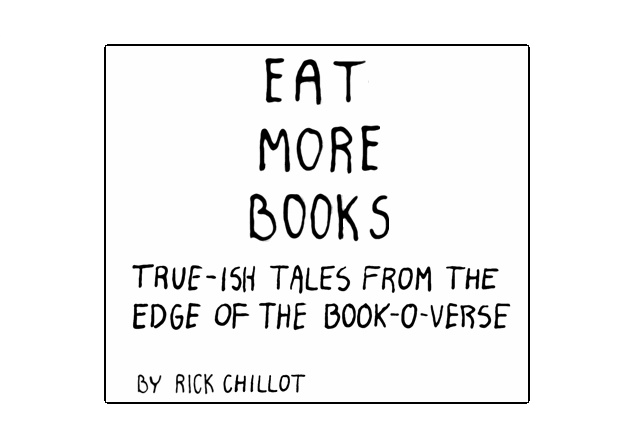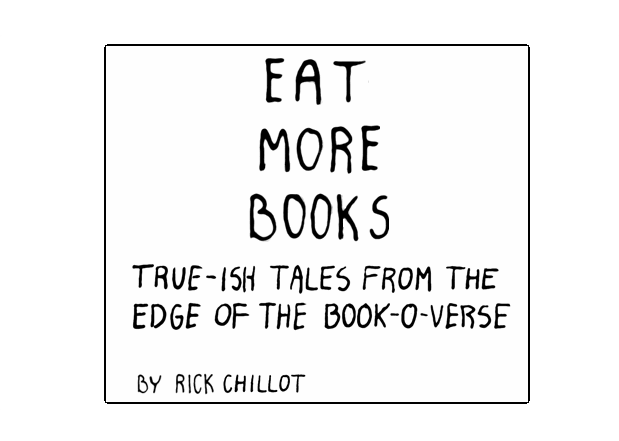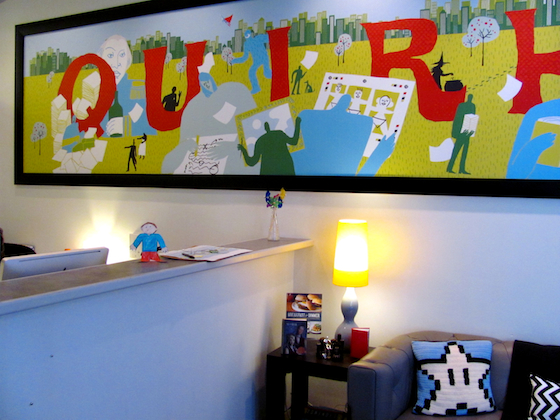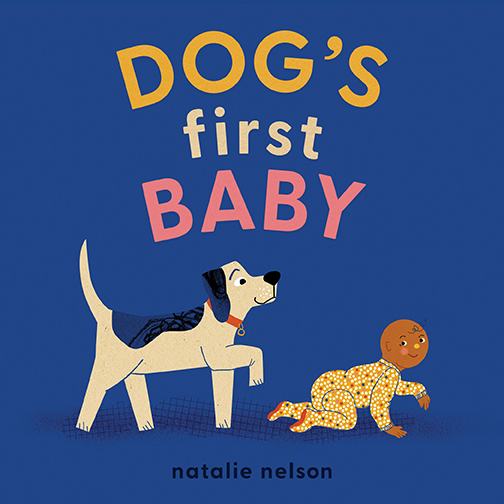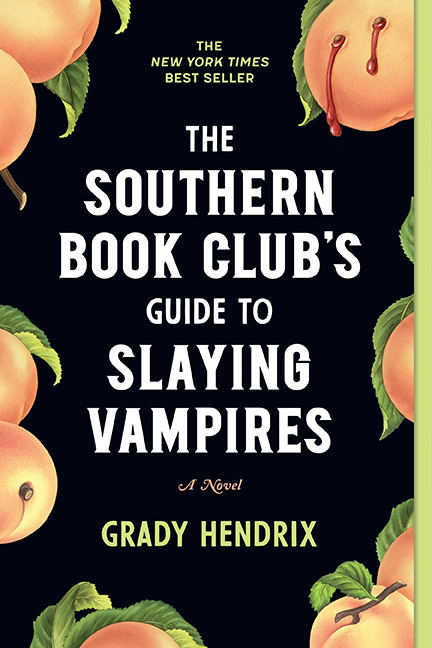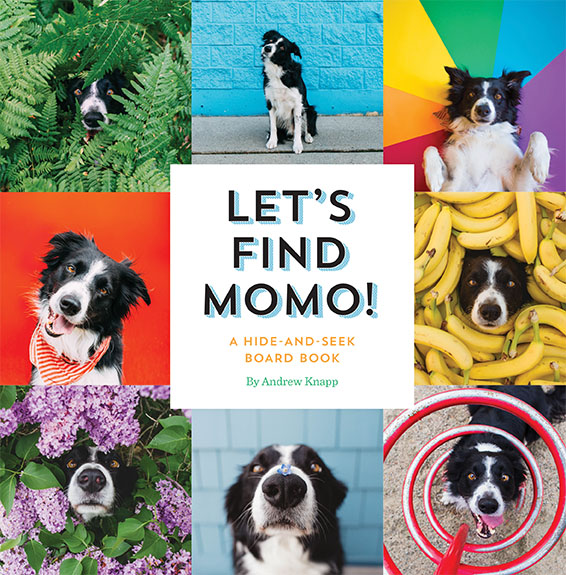Our Blog
Flat Is The New Thick: Flat Stanley Visits the Quirk HQ
Recently the Quirk compound was visited by beloved children's book character Flat Stanley.
As many of you will recall, young Stanley was rendered two-dimensional when a huge bulletin board fell on top of him. He didn't let flatness keep him down, though; in fact, he took advantage of the situation by folding himself into envelopes and mailing himself all around the world. Since then, kids in over 6.000 schools–including my nephew Sam–have participated in the Flat Stanley Project by creating their own Flat Stanleys and mailing them all over the place.
The Stanleys are mailed back with photos and information about where they've been. So here are some of the pictures from Stanley's visit to Quirk. (Spoiler alert–Sam got an A.)
Posted by Rick Chillot
Kickstarter: A Laboratory of What People Want
Here’s something cool I realized as I did my research for The Kickstarter Handbook. More than almost anything out there, Kickstarter is a laboratory of What People Want. The founding principle of Kickstarter, after all, is that you pledge dollars so that this film, or artwork, or awesome iPad accessory or building toy or desk lamp can be born. It won’t come into existence without your cash, and you want to see it happen. In fact, you want one.
Traditional investors in products and ideas often have a different motivation. They may like an idea, but the bottom line for a product investor is whether it will become popular enough to make money. What’s the return on the investment going to be? By contrast, when you give money to a Kickstarter project, you don’t get any equity in the venture. There is no pretense or hope of financial upside. It’s purely a vote for stuff that you wish would exist.
And because the vote is with real money, I think it’s more indicative of what people truly want than, say, a consumer survey, where you can say anything — sure I’d buy a hybrid car or Android-based hat — but you don’t have to actually put up any cash to prove it.
Posted by Don Steinberg
A Conversation with Don Steinberg, Author of The Kickstarter Handbook
Today, we’ve got a quick Q&A with Don Steinberg, author of The Kickstarter Handbook. Read on for some useful tips, and learn how he picked the campaigns he highlighted in the book.
Q: Out of thousands of successful and not-so-successful projects on Kickstarter, how did you pick the campaigns featured in The Kickstarter Handbook?
A: The purpose of the book is to give everybody who wants to launch a Kickstarter campaign some useful strategies, ideas that will help a project succeed, no matter how big or small or what type of project. So I sought out a wide variety of examples: projects with fundraising goals of $100,000 or more, projects with targets under $5,000, and many in between. Kickstarter has thirteen creative categories, from the new product inventions to performing arts like music, dance and film, and I wanted to get useful examples and strategies from as wide a range as possible. I also looked for Kickstarter campaigns that were extreme in some way to show how they did it—like a few people who raised an insane amount of money in their final hours. And there was stuff that I just thought was cool, like the guys who raised money to erect a statue of RoboCop in Detroit. Who wouldn’t want to read about that?
Q: What’s the biggest mistake one can make when attempting to fund a project through Kickstarter?
A: The biggest mistake seems to be the “set it and forget it” mentality—thinking that simply posting a project on Kickstarter is all you need to do to bring in all kinds of money. Kickstarter isn’t a magic pot of gold. It’s a great place to explain a project you’re passionate about and collect pledges from people who want to support it, but it’s still fund-raising. You still have to work hard to get attention and money. The dirty secret of crowdfunding is that, to a large extent, you have to bring or create your own crowd.
Q: You point out that Kickstarter might not be the right platform for everyone. How can someone determine whether or not they should use Kickstarter?
A: You must be prepared to treat your fund-raising effort like a campaign, almost like a political campaign, grinding it out for 30 days or however long you’ve set it up for. You have to be willing to ask friends and acquaintances for money. Kickstarter removes some of that stigma—it even can make fund-raising cool!—but it’s still not for everybody. You also have to be totally committed to your idea and really at the point where you just need X amount of dollars to finish it or take it to the next level.
Q: Have you tried to run a Kickstarter campaign? If so, what was your experience like? Have you backed someone else’s campaign?
A: I did set up a dummy campaign to experience Kickstarter’s set-up process, to research the book, but I haven’t identified my real passion project yet. The projects I’ve backed have been things I’ve wanted personally as a consumer of creative work. In one campaign, a chef from Idaho offered to send out fresh spice packets with recipes regularly, like a magazine subscription. What a cool idea. I also backed a documentary film about a radio station that I grew up listening to.
Q: You emphasize in The Kickstarter Handbook how unlikely a formula the Kickstarter model is—it seems incredible that so many people would give money to strangers to support a project that is still in the planning stage. Why do you think the crowdfunding phenomenon has caught on?
A: The Web has made so many new ways of connecting possible. I attribute a lot of it to eBay. Instead of Amazon or Walmart selling everything to everybody, it’s everybody selling everything to everybody. These days if you want to find an audience for your writing, music, videos, you don’t need to go through traditional distributors anymore. You also can make a microloan to a farmer in Guatemala, more or less directly, at Kiva.org, without wondering how some big global charity is handling your money. People like the power of making things happen. Kickstarter has the same sensibility—people are more or less voting on what products and movies and music should be brought to life, not relying on some big corporation to give its thumbs-up.
Q: Some campaigns get very creative with their rewards, offering not just T-shirts or tote bags but personal experiences. Have any rewards stuck out to you as ingenious, exciting, or a little bit insane?
A: The new products offered as rewards are definitely “not sold in stores” kind of stuff, and it can be really exciting to get in on the ground floor. Like a phone-controlled mini-robot, or make-at-home designer lampshades, or a clock that takes a whole year to go around and uses colors instead of numbers. I love how creative other kinds of projects have been with rewards—you start to appreciate how many things in life can be rewarding. The chance to be listed as a producer in the credits at the end of a movie—how cool is that? How could you ever get that before for 50 bucks?
Q: Musician Amanda Palmer recently used Kickstarter to raise over one million dollars to produce her own album and an accompanying art book, as well as to launch a tour. Do you anticipate funding like this, where more well-known artists are funded directly by their fans, becoming more common?
A: That’s happening a lot more, and not just on Kickstarter. Artists now have a choice. Labels and publishers and studios can help a project succeed, but if the deal isn’t right an artist has a chance to make it work by taking a creation directly to his or her audience.
Q: After interviewing the many different people featured in The Kickstarter Handbook who used Kickstarter and learning about their varied experiences with the site, what’s the single best piece of advice you can offer an aspiring creator?
A: Is money what’s preventing you from accomplishing your creative goal? Think about what’s really standing in your way. Is it money, or something else? If it’s something else, deal with that first! If you’re ready to roll and it really is just dollars holding you back, with Kickstarter that doesn’t need to be an obstacle—or an excuse—anymore.
Posted by Eric Smith
